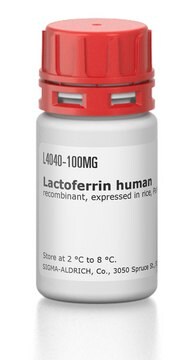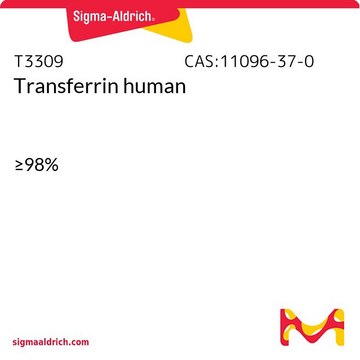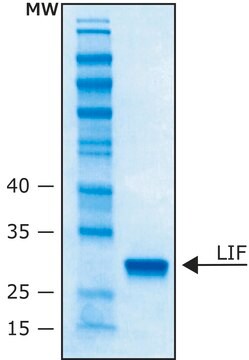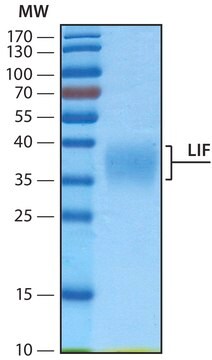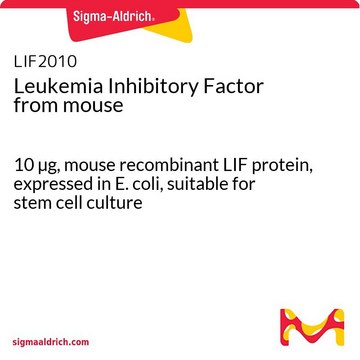L9545
Leukemia Inhibitory Factor human, animal component free
recombinant, expressed in rice, 500 μg/mL
Sinônimo(s):
Leukemia Inhibitory Factor human, LIF, rLIF
About This Item
Produtos recomendados
recombinante
expressed in rice
Ensaio
>95% (SDS-PAGE)
potência
>1 x 108 units/mg ED<sub>50</sub>
concentração
500 μg/mL
técnica(s)
cell culture | mammalian: suitable
Impurezas
<0.05 EU/μg endotoxin
nº de adesão UniProt
Condições de expedição
dry ice
temperatura de armazenamento
−70°C
Informações sobre genes
human ... LIF(3976)
Procurando produtos similares? Visita Guia de comparação de produtos
Ações bioquímicas/fisiológicas
forma física
Informações legais
Código de classe de armazenamento
10 - Combustible liquids
Ponto de fulgor (°F)
Not applicable
Ponto de fulgor (°C)
Not applicable
Certificados de análise (COA)
Busque Certificados de análise (COA) digitando o Número do Lote do produto. Os números de lote e remessa podem ser encontrados no rótulo de um produto após a palavra “Lot” ou “Batch”.
Já possui este produto?
Encontre a documentação dos produtos que você adquiriu recentemente na biblioteca de documentos.
Os clientes também visualizaram
Nossa equipe de cientistas tem experiência em todas as áreas de pesquisa, incluindo Life Sciences, ciência de materiais, síntese química, cromatografia, química analítica e muitas outras.
Entre em contato com a assistência técnica

